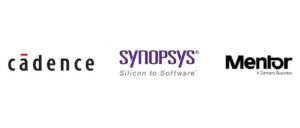Introduction:
In the fast-evolving landscape of technology, where performance benchmarks seem to reach new heights regularly, one critical challenge stands as a formidable hurdle – Energy Efficient Computing.
As we navigate the complexities of the digital age, it becomes increasingly clear that addressing this challenge is not only a technological necessity but also a pivotal step towards ensuring sustainability in our ecosystem.
Follow us on LinkedIn for everything around Semiconductors & AI
What is Energy Efficient Computing Problem in Semiconductor & AI industry
In considering the achievement of enhanced energy efficiency in computing, another compelling aspect that significantly impacts daily lives is the rapid and widespread adoption of artificial intelligence (AI).
The ever-growing demand for computational power intricately drives the surge in AI adoption.
- Training vs. Running: Training a large language model like ChatGPT consumes a significant amount of energy upfront. This can be a one-time cost, as the trained model can be used for many queries afterward.
- Running Cost: The daily operation of the servers running ChatGPT also consumes energy. This cost is ongoing and depends on the number of queries processed.
- 0.0017 kWh to 0.0026 kWh: This estimate translates to the energy used by a typical appliance (like a toaster) for a few seconds.
- Equivalent to a 5W LED bulb for 1 hour 50 minutes: This comparison highlights the significant energy consumption compared to a simple Google search.
In order to make computing smarter, more capable, and adaptable to various problem-solving scenarios, there is an inherent necessity to develop increasingly powerful computers.
As an example, the expansion of generative AI models, characterized by an escalating number of parameters, results in improved model performance.
However, this improvement comes at the cost of heightened computational requirements for both training and inference processes.
Read More: Meta Switches To Samsung Foundry from TSMC For AI Chip Due To Uncertainty – techovedas

The imperative is to continually advance computing capabilities to meet the escalating demands posed by AI technologies.
This aligns with the broader objective of pushing the boundaries of computing to address challenges related to energy efficiency and accommodate the evolving landscape of artificial intelligence applications.
The Energy Efficient Computing Paradox:
Analyzing the trends in Energy Efficiency over the past decade reveals a concerning paradox. While performance metrics have surged forward with the integration of cutting-edge technologies, Energy Efficiency has not kept pace.
Addressing this flattening of the efficiency curve is paramount, both from a technological and sustainability standpoint. Examining the historical trend in supercomputing usage over the past decade, a gradual increase in efficiency is observed, measured in gigaflops per watt.

However this improvement rate is slower compared to performance enhancements. Efficiency doubles only every two to two and a half years, in contrast to the more rapid performance improvements.
Supercomputing, a field at the forefront of technological advancement, reflects this challenge vividly. The gigaflops per watt metric, a measure of computational efficiency, has shown improvement over the years, but the rate of enhancement is slowing down. Despite doubling in efficiency every two to two and a half years, achieving Zeta scale computing poses a colossal challenge due to the potential need for power inputs on the order of nuclear power plants.
Read More: $180K : How China is Empowering AI Start-ups with Computing Vouchers – techovedas

The fundamental challenge that emerges is clear – over the next decade, our primary focus must be on enhancing compute efficiency. This imperative arises from the realization that sustaining the remarkable performance improvements witnessed in recent years hinges on our ability to overcome the barriers posed by the limitations of current Energy Efficiency trajectories.
Reasons for the Energy Efficient Computing Conundrum:
Several factors contribute to the sluggish progress in Energy Efficiency.
1. Slowdown of Moore’s law
The slowdown of Moore’s Law, which traditionally dictated a doubling of performance every three to three and a half years, poses a considerable hurdle. Advanced process technologies at the nanometer scale, while still delivering improvements, face diminishing returns and increased difficulty in achieving density, performance, and efficiency gains.

However, with the transition to advanced nodes like five and four nanometers shifting to three and two nanometers, improvements continue but at a slower rate. This deceleration in energy efficiency is attributed to these developments.
2. I/O don’t scale
The lack of scalability in Input/Output (I/O) compared to logic arises from several factors. While logic components have seen significant advancements in miniaturization and performance, I/O interfaces face inherent limitations due to their different operational characteristics and requirements.

One primary reason for the discrepancy lies in the physical nature of I/O components. Unlike logic circuits, which primarily rely on semiconductor materials for computation, I/O interfaces often involve additional components such as connectors, cables, and peripheral devices. These components introduce additional complexities and constraints that hinder scalability.
Furthermore, the design and functionality of I/O interfaces prioritize reliability, robustness, and compatibility over miniaturization and performance gains. As a result, the emphasis on ensuring compatibility with various devices and protocols can limit the extent to which I/O interfaces can scale down in size and complexity.
3. Memory Access Power
The Memory Access Power problem refers to the challenge of managing power consumption associated with accessing memory in computing systems. As data sets grow larger and computational tasks become more complex, the demand for memory bandwidth increases. This heightened demand for data retrieval and storage operations leads to greater power consumption associated with accessing memory modules.

Excessive power consumption during memory access can contribute to increased energy costs, heat generation, and overall system inefficiency. Therefore, addressing the Memory Access Power problem involves developing innovative solutions to minimize power consumption while ensuring timely and reliable access to memory resources.
The Path Forward for Energy Efficient Computing: Driving System-Level Efficiency
To address the Energy Efficiency challenge over the next decade, a multifaceted approach is essential. Key areas of focus include:
1. Architecture
Efficiency through advanced architecture entails employing various techniques to optimize computing systems.
However, the primary focus lies in selecting the appropriate compute technology for specific workloads. This involves leveraging heterogeneous architectures or accelerated computing to match computing resources with the demands of particular tasks.

For instance, the exaflop supercomputer utilizes the Mi 250 processor, a cutting-edge GPU designed to exploit architectural innovations and packaging trends. This includes domain-specific enhancements tailored for both high-performance computing (HPC) and artificial intelligence (AI) workloads. Additionally, the Mi 250 features integrated high-bandwidth memory and advanced power management techniques to enhance overall efficiency.

Each component of the Mi 250, from its six-nanometer GPU architecture to its integration capabilities and power management features, plays a vital role in optimizing the efficiency of the overall computing solution. By focusing on these aspects, computing systems can achieve heightened levels of performance and energy efficiency across a range of workloads.
2. Advanced Packaging
A notable progression in Advanced Packaging technology is evident, showcasing advancements in both capability and efficiency. Initially, this journey commenced with two-dimensional Multi-Chip Module (MCM) technology.
This approach emphasizes utilizing the appropriate process technology for different components, such as employing dense transistors for computing elements and less dense options for analog and I/O capabilities. This optimization facilitates enhanced performance and functionality.

Moving to two-and-a-half-dimensional (2.5D) packaging, memory components can be brought closer to GPUs, a prevalent practice that enhances system efficiency. While the adoption of three-dimensional (3D) chip stacking, or triplets, is still in its nascent stages, its potential for significant capability enhancement is undeniable. The ability to stack memory on top of processors or logic on top of logic promises substantial benefits, primarily in reducing communication costs and improving overall efficiency.

By consolidating compute elements through on-package integration in 2D or 2.5D arrangements, or through stacked configurations in 3D, the need for energy-intensive communication between components is significantly reduced.
This consolidation results in a marked improvement in communication efficiency, which holds immense promise for future computing systems. These advancements in Advanced Packaging represent a critical area of focus for driving efficiency and performance enhancements in computing architectures.
3. Domain Specific Computing:
Domain-specific computing refers to the design and implementation of computer systems, architectures, and algorithms tailored to address specific application domains or problem sets efficiently. Unlike general-purpose computing, which aims to provide versatility across a wide range of tasks, domain-specific computing focuses on optimizing performance, energy efficiency, and resource utilization for a particular application domain or workload.
The concept of domain-specific computing recognizes that many computational tasks exhibit recurring patterns, characteristics, or requirements unique to specific domains. By customizing computing resources, hardware accelerators, and software algorithms to match these domain-specific needs, significant performance improvements and efficiency gains can be achieved.

Universal 3D CPU+GPU:
In more traditional computing setups, CPUs and GPUs typically operate with their own dedicated memory caches, limiting their ability to share data seamlessly between them without involving the processor. However, with the introduction of new architectural capabilities in stacked formats, the possibility of a unified memory architecture emerges. This unified approach allows for more efficient data sharing between different processing units, depending on the nature of the task at hand. This shift towards unified memory architectures is seen as a significant step towards achieving greater efficiency in computing systems.

The emphasis on architectural advancements, particularly in compute operations, is expected to have a profound impact on future efficiency gains. Through a combination of architectural innovations, chiplet integration, and 3D stacking techniques, it is believed that efficiency levels can surpass industry standards and even exceed earlier projections. This approach offers a promising perspective on how computing systems can continue to evolve towards higher levels of efficiency and performance.
Conclusion:
As we stand on the cusp of a new decade in computing, the Energy Efficiency challenge looms large. Tackling this challenge requires a concerted effort from the technological community. By driving innovations in architecture, process technology, addressing IO limitations, and revolutionizing memory access power, we can pave the way for a sustainable and efficient computing future. The journey ahead involves a commitment to holistic solutions that encompass computation, communication, and memory – the trifecta that will shape the efficiency landscape of the future.
Image Credits: Lisa Su lecture on ISSSC ,2023.



